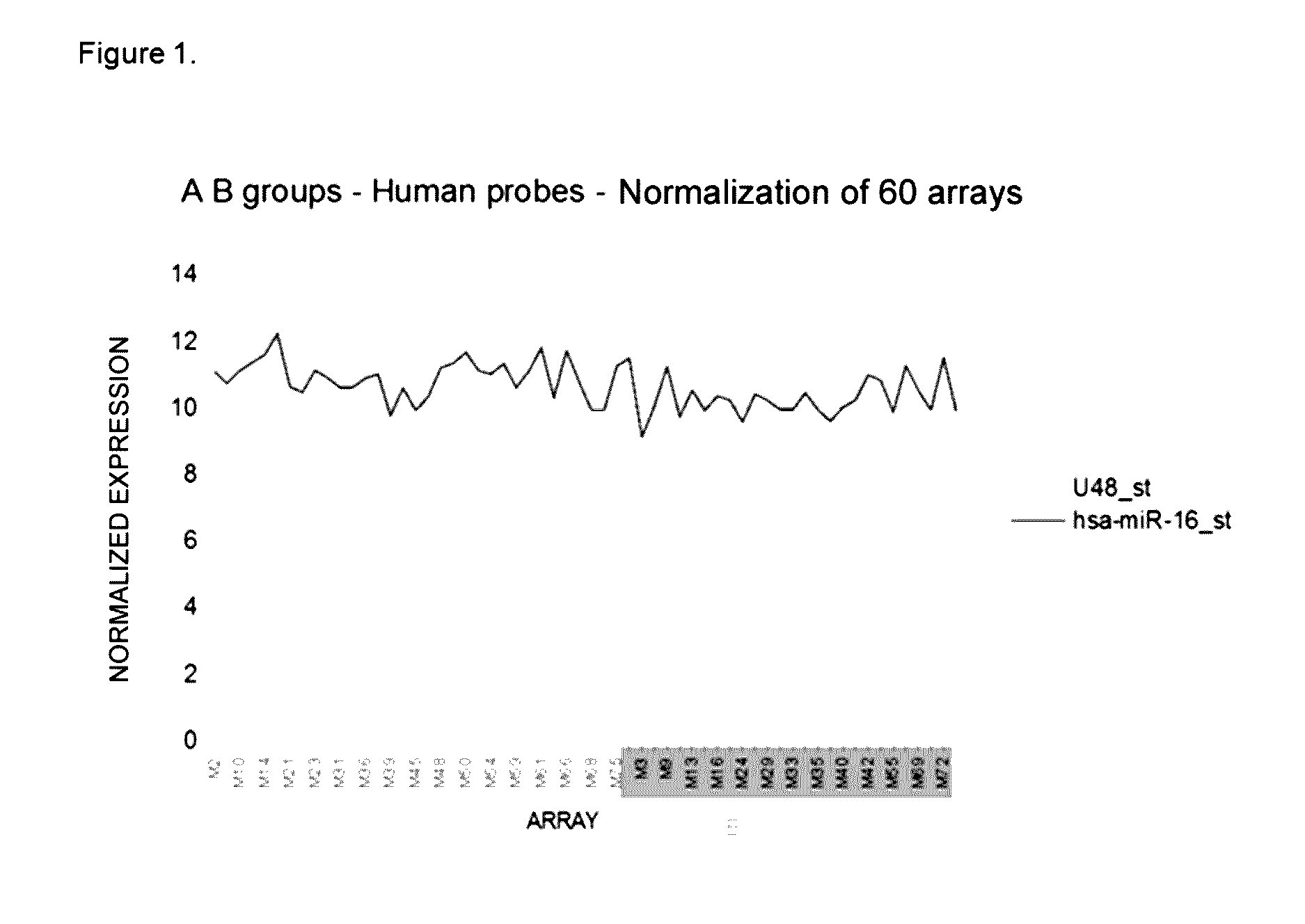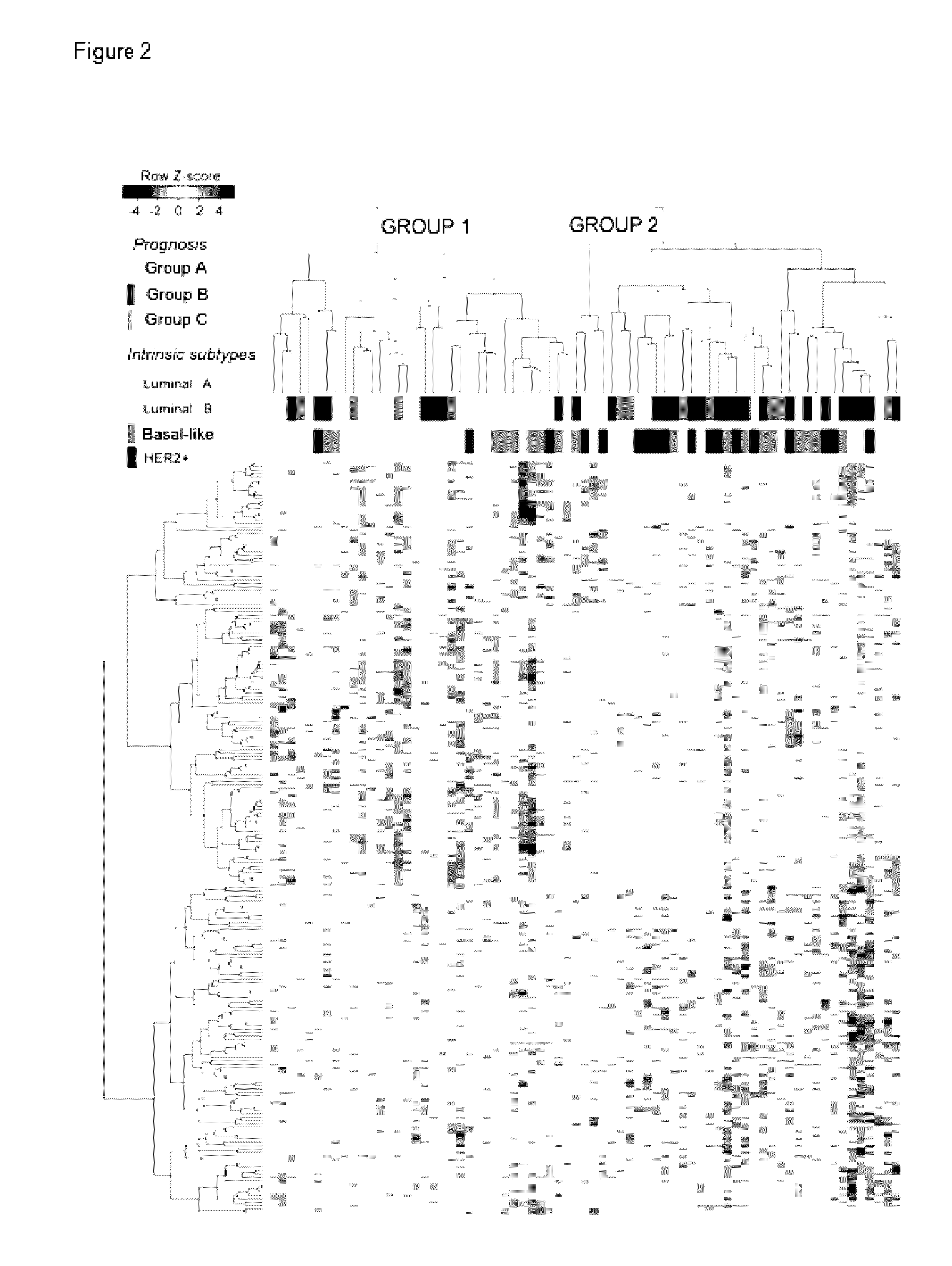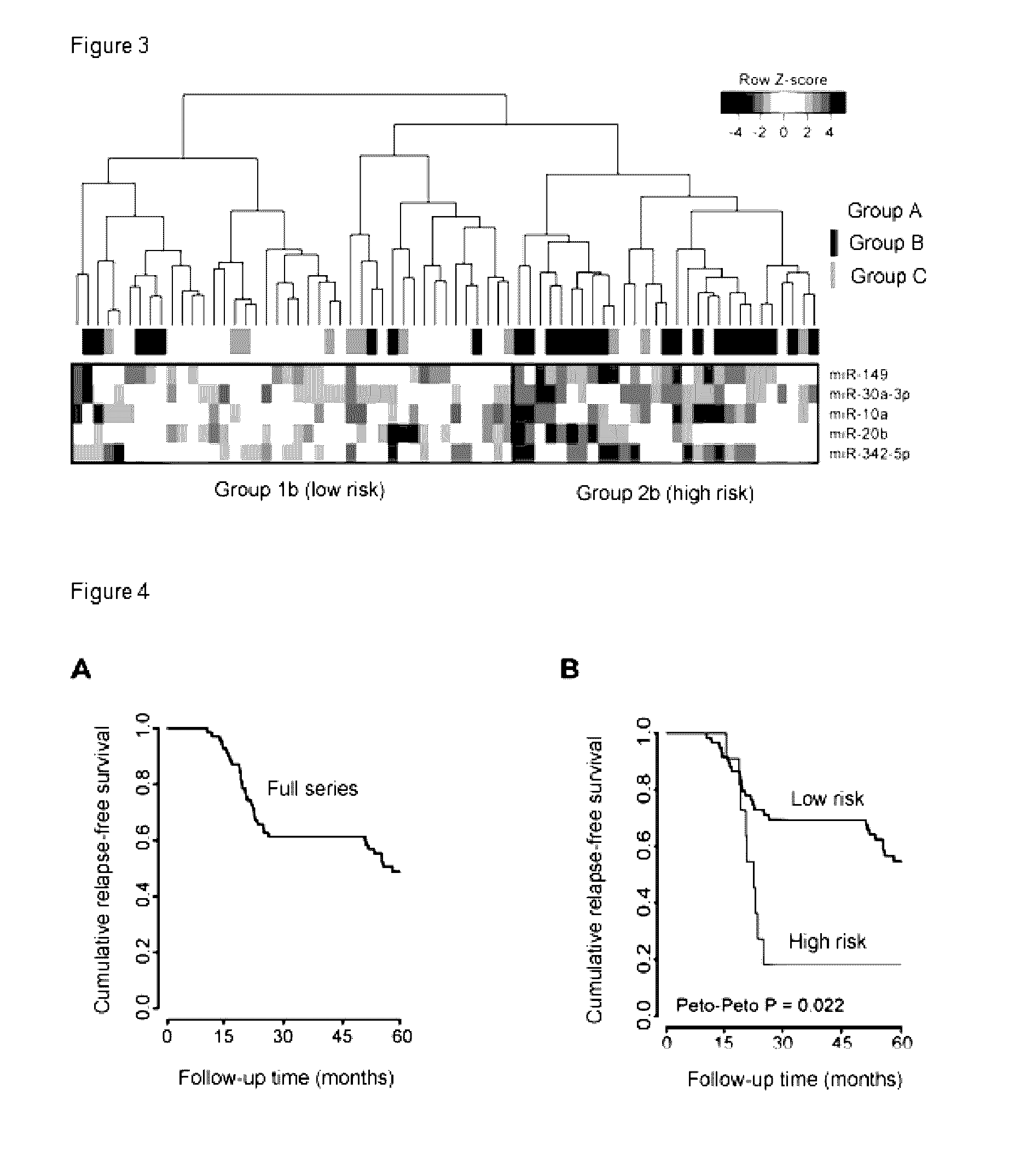Microrna signature as an indicator of the risk of early recurrence in patients with breast cancer
a breast cancer and microrna signature technology, applied in the field of microrna signature as an indicator of the risk of early recurrence in breast cancer patients, can solve the problem of high risk of recurrence of tumors
- Summary
- Abstract
- Description
- Claims
- Application Information
AI Technical Summary
Benefits of technology
Problems solved by technology
Method used
Image
Examples
example 1
Materials and Methods
[0151]Samples from Patients
[0152]Seventy-five patients with breast cancer included in the study were subjected to surgery for removing the primary tumor in Hospital Universitario Virgen de la Victoria (HUVV, Malaga, Spain) at some point during the period of 1998-2005. All the patients gave their written informed consent to be included in the study, which was approved by the hospital's Clinical Research Ethics Committee (CREC). The patients were treated uniformly and follow-up was conducted according to the protocols established by the Clinical Oncology Department, based on scientific evidence and international recommendations. All the clinical research was conducted according to the principles expressed in the Declaration of Helsinki. No patient received neoadjuvant therapy. The clinicopathological data and follow-up information were obtained for each patient by means of going over their medical records.
[0153]Formalin-fixed and paraffin-embed...
example 2
Microarray Analysis
[0160]For identifying the miRNAs associated with early and late recurrence, the abundance of 1105 miRNAs was analyzed in a cohort of 75 primary breast tumors by microarray technology. The tumors were classified into three prognosis groups according to the clinical progression of the patients as follows: Group A, patients who were disease-free 60 months after removal of the tumor; Group B, patients who developed early recurrence (24 months after surgery); and Group C, patients who developed late recurrence (50-60 months after surgery). Table 3 summarizes the clinicopathological data of the study population. Except for group C, the cohort was balanced for the 4 intrinsic subtypes: luminal A type, luminal B type, basal-like type and HER2+. The last two subtypes are associated with a more aggressive phenotype and a higher risk of relapse [24, 26], which explains why group C (late recurrence) is primarily made up of luminal tumors (Table 3).
TABLE 3Clinicopathological f...
example 3
Prognostic Value of the Signature of the Five miRNAs
[0167]The relationship between expression of the 5-miRNA signature and recurrence-free survival (RFS) was examined by means of survival analysis. FIG. 4A shows a Kaplan-Meier graph for the entire series of patients included in the study. Due to the intrinsic characteristics of the cohort, the drop in RFS is only observed in the intervals of 0-24 and 50-60 months (corresponding to groups B and C, respectively). The tumors were then grouped into two different groups according to their 5-miRNA signature. A first group includes tumors with the five miRNAs negatively regulated simultaneously (FC>2 and p<0.05), and a second group includes those tumors that did not have the five miRNAs negatively regulated simultaneously. Survival analysis was conducted using the clinical data of the corresponding patients. As shown in FIG. 4B, the Kaplan-Meier graphs for both groups show that the 5-miRNA signature defines a “high risk” group of patients ...
PUM
| Property | Measurement | Unit |
|---|---|---|
| Level | aaaaa | aaaaa |
Abstract
Description
Claims
Application Information
 Login to View More
Login to View More - R&D
- Intellectual Property
- Life Sciences
- Materials
- Tech Scout
- Unparalleled Data Quality
- Higher Quality Content
- 60% Fewer Hallucinations
Browse by: Latest US Patents, China's latest patents, Technical Efficacy Thesaurus, Application Domain, Technology Topic, Popular Technical Reports.
© 2025 PatSnap. All rights reserved.Legal|Privacy policy|Modern Slavery Act Transparency Statement|Sitemap|About US| Contact US: help@patsnap.com



